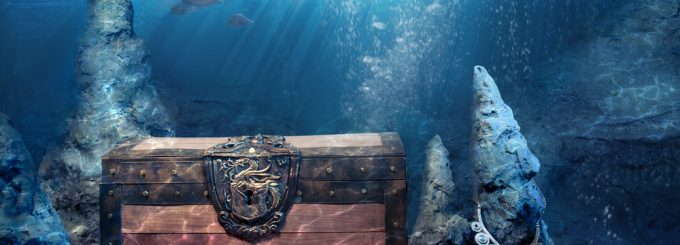Rare American Bank Note Discovered in Sunken Treasure

Before the invention of the airplane, the fastest way of traveling long distances was by ship. However, sometimes ships would sink, which is what happened to the S.S. Central America. Incredibly, the vessel contained a safe which held a rare, Bank of Syracuse $5 bill which was recovered and sold during a 2022 auction for a fortune.
Currency Highlights
There are actually 5 bank notes which were recovered from the shipwreck and sold at the auction, and these consist of:
- $5 Peoples Bank from Charleston in South Carolina (Haxby G2a)
- $5 Bank of Syracuse from New York (Haxby G12c)
- $3 Newark State Bank, New Jersey
- $20 North River Bank from New York (Haxby G50c)
- $5 Exchange Bank from Bangor Maine (Haxby G8)
In addition to the notes above, there are hundreds of other artifacts which were recovered, and these will be auctioned separately. The shipwreck occurred 157 years ago, and it took until 2014 for divers to fully retrieve the contents from the seabed, which is approximately 7,200 feet beneath the Atlantic Ocean just off the North Carolina coast. A group of currency specialists from Northeast Document Conservation Center at Andover, Md tended to the recovered notes and used the latest technology to preserve them.
It is assumed that some of these notes were utilized by the passengers to purchase their tickets. It is also believed that the sailors and captain accepted the bills since the Purser didn’t realize at the time that the bank which issued them had actually failed. A number of other valuables were also recovered, which include coins, jewelry and vintage clothing from the 1850s.
Background
During early American history, it was common for regional banks to issue their own notes. These notes were used to pay for goods and services just like currency issued by the U.S. government. Steamboat technology was cutting edge during the 19th century and was the preferred method that the well to do used to travel long distances. The S.S. Central America was on just such a voyage in 1857 when it sank. Of the 578 crewmembers and passengers onboard, 425 perished.
The devastating loss of life combined with the sunken and missing gold cargo is believed by historians to have played a pivotal role in the fiscal Panic of 1857 which swept the country. Research suggests that the insurance claims covering the loss were paid during the following years, but recovery of the treasure wouldn’t begin until 1988 and conclude in 2014. An organization called the California Gold Marketing Group got a clear title and court approval for all the treasure and items that were recovered.
One of the most interesting finds is a golden stickpin which was created using the Type 2 1854 through 1856 golden $1 coin. This item will be sold at auction, but there were also items recovered from the ship which were considered ordinary at the time, like clothing which are considered rare vintage items today. Some collectors have waited decades for these items to be auctioned, and it is considered by some to be on the greatest treasure finds in North Carolina history.


